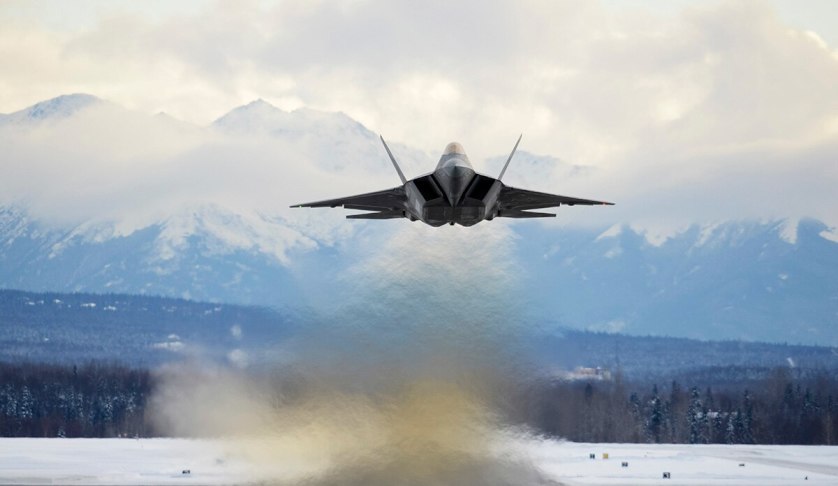Japan’s pursuit of a leading-edge, air dominance fighter appears to have taken several steps forward and a few back amid revelations that the Japanese Ministry of Defense’s Acquisition, Technology & Logistics Agency (ATLA) is planning to proceed with a Japanese-led development program.
To continue reading the rest of this article, please log in.
Create free account to get unlimited news articles and more!
The current global and regional transition from fourth to fifth-generation fighter aircraft, like the F-22 Raptor and F-35 Joint Strike Fighter platforms, is reshaping the role of fighter fleets and the balance of power in the Indo-Pacific region.
Designed to establish and maintain air superiority or air dominance, fighter aircraft have evolved from relatively simple wood and canvas airframes during the First World War to the highly manoeuvrable long-range aircraft that dominated the skies of Europe and the Pacific during the Second World War. The latest two generations of fighters are the pinnacle of these earlier designs.
Driven largely by advances in the capabilities fielded by both a resurgent Russia and a rising China, both of whom are increasingly eager to exercise their influence over strategically vital areas, like the East and South China Seas in particular.
Increasingly advanced, highly capable fourth, 4.5 and fifth-generation fighter aircraft that combine low observable coatings and airframes, increased aerodynamic performance, advanced sensor suites and computational power like the air dominance/air superiority specialised F-15 Eagle series, F-22 Raptor, Russian Su-57 and Chinese J-20 are at the pinnacle of the contemporary airpower hierarchy.
In response to these challenges, the Japanese MoD launched the development of the X-2 Shinshin, a technology demonstrator that proved Japan's domestic aerospace industry could produce an indigenous stealth fighter design capable of competing with the world's best.
To support the development of a Japanese air superiority fighter, the Japanese government and Japanese Defense Ministry have kicked off the Future Fighter Development Office to begin operations in April 2020.
The planned Future Fighter Development Office was first mentioned in the 30 August budget request for FY2020. In the budget request, the Japanese Defense Ministry urged the Japanese government to approve the launch of a Japan-led aircraft development program that can play a crucial role in the development of the country’s next fighter aircraft.
It has been revealed that the JASDF and MoD will determine a preliminary partnership framework for the development of the F-X fighter aircraft. While details remain light, it is expected that the formal draft will be finalised by December 2020.
Additionally, it has been revealed that funding for the F-X development program will reach about ¥28 billion (US$256.5 million) in FY2020.
A total of ¥16.9 billion of this funding (60 per cent) will be spent on “F-X related research projects”, said the spokesperson, with the remaining ¥11.1 billion (40 per cent) allocated for “conceptual design in Japan-led development” activity.
It was long believed that Japan would draw on international experience and relationships with the likes of Lockheed Martin, Boeing and Northrop Grumman and British titan, BAE Systems to develop the next-generation fighter and spread the development costs.
However, it has recently been revealed that the Japanese Ministry of Defense's ATLA is placing preference on a local-centric development and design phase.
As reported by Janes, an ATLA spokesperson said, "Based on previous discussions, the option of 'developing derivatives of existing fighters' cannot be a candidate from the perspective of a Japan-led development, and the MoD has come to the conclusion that we will develop a new model, and also this has been communicated to Lockheed Martin.
"We recognise we have built up enough technology to make a fighter development project possible domestically," spokesperson added, pointing out, however, that, as mentioned in the MoD's Mid-Term Defense Program (MTDP), the project includes the possibility of international collaboration.
Both Lockheed Martin and Northrop Grumman have a history of developing highly capable fighter systems; Lockheed’s F-22 Raptor is the world’s premier air superiority and air dominance fighter aircraft, while Northrop Grumman, largely famous for its UFO-like B-2 Spirit stealth bomber and the new B-21 Raider bomber, competed with the Raptor design during the competition to replace the F-15 Eagle in the early ’90s with the YF-23 Black Widow.
The Black Widow, although unsuccessful in the competition, presented the US Air Force and now Japan with an incredibly stealthy, fast and manoeuvrable air frame.
The Japanese requests for information (RFI) identify that the program would be worth approximately US$40 billion for up to 100 new stealth fighters and would see increased global industry participation.
It is understood that Northrop provided a suite of technologies that could be incorporated into the Japanese F-X project. Meanwhile, Boeing and European conglomerate BAE Systems have also been invited to contribute to the program in an attempt to spread development costs and burdens.
Tokyo aims to replace the Japan Air Self-Defense Force's Mitsubishi F-2 fighter aircraft with a future fighter in the 2030s.

 Login
Login







